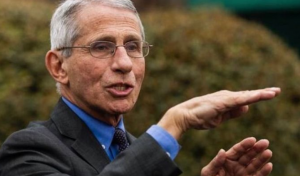The fans have largely gone missing, the training protocols have undergone a sea change and bio-bubbles have become the new normal despite the growing concerns over the mental toll they are taking.
It is exactly one year since India’s sporting landscape, along with the rest of the world, lost most of its vibrancy thanks to the COVID-19 pandemic.
The beginning of it all was with a sudden closure for a few months, athletes locked in hostel rooms or their homes, without any practice or supervision of national coaches.
But as they adapted to the fear and uncertainty, a tentative resumption followed on global cues. That has continued despite relatively minor glitches cropping up both on and off the field of play.
Cricket was the first to hit the restart button in Indian sports with the IPL, albeit on foreign shores of UAE, in a strict bio-secure bubble.

A few COVID cases caused a flutter before it began but once the tournament-proper started rolling, it set a new benchmark on how to conduct an event amid a raging pandemic.
But the rules of engagement changed. So no saliva to shine the ball, no handshakes at toss, no moving out of the hotels during series, and mostly no fans to egg them on.
It was welcomed to start with as players were just desperate to compete again but the murmurs have grown louder by the day about the impact such isolation is having on the mental health of those competing.
India skipper Virat Kohli was upfront on the challenging situations that might arise out of such a taxing system if scheduling is not eased up a bit.
“…you just don’t know where restrictions might come in and you have to, even in future, continue to play in bubbles…it’s not just the physical side of things but mental side of things as well,” he said at a press conference during the ongoing series against England.

“Otherwise it’s going to be a case of whoever can last through difficult times like these, plays. If not, you know, move away and someone else replaces that player.
“I don’t think that’s healthy for a cricket system and a cricket culture moving forward,” he warned.
On the upside, head coach Ravi Shastri talked about the bonding that grew with being in a bubble when players had just each other to fall back on.
In sports other than cricket, it has been about not just making adjustments but also redrawing the plans after the Tokyo Olympics were postponed to this year.
The suspension was welcomed at first as hardly anyone wanted to risk it in the face of a virus that has still not been controlled despite the arrival of multiple vaccines and better treatment protocols.
However, as days turned to weeks and weeks into months, the frustration grew about not knowing what might happen next.
For those who had booked their Tokyo tickets, the wait and watch was easier but for those still not assured of a berth at the quadrennial showpiece, the battle to keep the morale intact has been quite something.

Take for instance ace shuttler Saina Nehwal, a trailblazing Olympic bronze-medallist who is still in pursuit of a Tokyo ticket.
Virus concerns prompted her to opt out of the handful of events that took place in 2020 before she tested positive for the dreaded infection and returned to action only in January.
The rustiness ensured that she did not go far in these tournaments and now the seasoned pro has to make at least the quarterfinal of the remaining 3-4 events to have any chance of qualifying for the Games in July-August.
She isn’t the only one battling such a tense scenario. And this pressure is in addition to the challenges of isolation and constant testing.
At a boxing tournament in Spain earlier this month, India’s entire campaign on the final day was derailed after one pugilist tested positive for the virus, leading to three forced pullouts.
Such setbacks, seemingly beyond control despite the highly sanitised competition environments, are a new challenge for the teams and their support staff to deal with.
“What can one do, just take it on the chin and move forward,” an Indian boxing coach said of the disappointment.
The redrafted training protocols were particularly tough for contact sports like boxing and wrestling as sparring was initially banned to avoid infection.
This year, that crucial aspect of their routine has been reinstated with necessary safeguards like keeping it restricted to a limited pool after testing.
The impact of sparring ban was such that several Olympic-qualified wrestlers and boxers travelled abroad for training where lockdowns were not as stiff allowing them to engage with fellow pugilists and grapplers.
Shooters, who carry the maximum burden of expectations when it comes to Olympic medals hopes, are back at the range with the ongoing Delhi World Cup and have been largely impressive despite not competing for a year

The story has been similar for track-and-field athletes, the paddlers, the tennis players and many of their other colleagues.
They have adapted to the new normal despite the many trials and troubles. A shining example of it was the Olympic qualification achieved by top paddlers like A Sharath Kamal and Manika Batra earlier this month.
Not to forget the new national marks set at the athletics’ Indian Grand Prix around the same time.
Being the practitioners of individual sports, it was hardly surprising that they adapted to the isolation that came with the pandemic rather effortlessly and that can also be a pretty reasonable explanation for their business-as-usual comebacks.
Or is it the inherent resilience that comes with being a top-flight sportsperson? Or perhaps, it is simply Citius, Altius, Fortius in an Olympic year.






